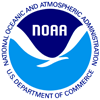References
References may not display properly if you do not have a subscription to copyright holder's service.
WJ, Blackwell, Braun, S, Bennartz, R, et al. An overview of the TROPICS NASA Earth Venture Mission. Q J R Meteorol Soc. 2018; 144 ( Suppl. 1): 16– 26. . doi: https://doi.org/10.1002/qj.3290
Aksoy, A., S. Lorsolo, T. Vukicevic, K.J. Sellwood, S.D. Aberson, and F. Zhang, 2012: The HWRF Hurricane Ensemble Data Assimilation System (HEDAS) for High-Resolution Data: The Impact of Airborne Doppler Radar Observations in an OSSE. Mon. Wea. Rev., 140, 1843–1862. doi: http://dx.doi.org/10.1175/MWR-D-11-00212.1
Ashcroft, P. D., and F. J. Wentz, 2000: AMSR level 2A Algorithm, vol. 121599B-1, Rep., 29 pp, Remote Sensing Systems, Santa Rosa, CA. http://images.remss.com/papers/amsr/AMSR_Level2A_Algorithm_ATBD.pdf
Bauer, P., and A. Mugnai, 2003: Precipitation profile retrievals using temperature-sounding microwave observations, Journal of Geophysical Research, 108(D23) doi: http://dx.doi.org/10.1029/2003JD003572
Bell, W., Di Michele, S., Bauer, P., McNally, T., English, S., Atkinson, N., et al. (2010). The Radiometric Sensitivity Requirements for Satellite Microwave Temperature Sounding Instruments for Numerical Weather Prediction. J. Atmos. Oceanic Technol. , 27 (3), 443-456. doi: http://dx.doi.org/10.1175/2009JTECHA1293.1
Bell, W., English, S., Candy, B., Atkinson, N., Hilton, F., Baker, N., et al. (2008). The assimilation of SSMIS radiances in NWP models. IEEE Trans. Geosci. Remote Sens. , 46, 884- 900. http://dx.doi.org/10.1109/TGRS.2008.917335
Bennartz, R., and T. Greenwald, 2011: Current problems in scattering radiative transfer modelling for data assimilation. Q J Roy Meteor Soc, 137, 1952-1962 DOI: http://dx.doi.org/10.1002/qj.953
Bennartz, R. and Bauer, P., 2003: Sensitivity of microwave radiances at 85–183 GHz to precipitating ice particles. Radio Science 38: doi: http://dx.doi.org/10.1029/2002RS002626 issn: 0048-6604
Bennartz, R., 2000: Optimal convolution of AMSU-B to AMSU-A. Journal of Atmospheric and Oceanic Technology, 17, 1215-1225. doi: http://dx.doi.org/10.1175/1520-0426(2000)017<1215:OCOABT>2.0.CO;2
Bennartz, R., 2014: Remote Sensing of Snowfall. Peer-reviewed book chapter in: Encyclopedia of Remote Sensing. Njoku, Eni G. (Ed.), 2014, 1000 p. 350. ISBN 978-0-387- 36698-2.
Bessho, K., T. Nakazawa S. Nishimura, and K. Kato, 2010: Warm core structures in organized cloud clusters developing or not developing into tropical storms observed by the Advanced Microwave Sounding Unit. Mon. Wea. Rev., 138, 2624-2643. doi: http://dx.doi.org/10.1175/2010MWR3073.1
Bessho, K., M. DeMaria, and J. A. Knaff, 2006: Tropical cyclone wind retrievals from the Advanced Microwave Sounding Unit (AMSU): Application to surface wind analysis. J. Appl. Meteor. Climatol., 45, 399–415. doi: http://dx.doi.org/10.1175/JAM2352.1
Biswas S. K,, S. Farrar, K Gopalan, A. Santos Garcia, W. L. Jones, and S. Bilanow, 2013: Intercalibration of microwave radiometer brightness temperatures for the global precipitation measurement mission. IEEE Trans. Geosci. Remote Sens., 51, 1465-1477.
doi: http://dx.doi.org/10.1109/TGRS.2012.2217148
Blackwell, W. 2001: NPOESS Aircraft Sounder Testbed-Microwave (NAST-M): Instrument Description and Initial Flight Results . IEEE Trans. Geosci. Remote Sens. , 39 (11), 2444-2453. http://dx.doi.org/10.1109/36.964981
Blackwell. (2005). A Neural-Network Technique for the Retrieval of Atmospheric Temperature and Moisture Profiles From High Spectral Resolution Sounding Data. IEEE Trans. Geosci. Remote Sens. , 43 (11), 2535-2546. http://dx.doi.org/10.1109/TGRS.2005.855071
Blackwell. (2013). MicroMAS: A First Step Towards a Nanosatellite Constellation for Global Storm Observation. 27th Annual AIAA/USU Conference on Small Satellites (pp. SSC13- XI-1). Logan, UT: Utah State University.Blade, I., & Hartmann, D. (1993). Tropical intraseasonal oscillations in a simple nonlinear model. J. Atmos. Sci. , 50, 2922-2939. http://digitalcommons.usu.edu/smallsat/2013/all2013/120/
Boukabara , S.-A., F. Weng , R. Ferraro , L. Zhao , Q. Liu , B. Yan , A. Li , W. Chen , N. Sun , H. Meng , T. Kleespies , C. Kongoli , Y. Han , P. Van Delst , J. Zhao and C. Dean, 2006: Introducing NOAA’s Microwave Integrated Retrieval System (MIRS), 15th International TOVS Satellite Conference (ITSC-15), Maratea, Italy, 2006 http://www.star.nesdis.noaa.gov/smcd/mirs/publications/MIRS_Presentation_BoukabaraEtAl.pdf
Braun, S. A., M. T. Montgomery, K. Mallen, and P. Reasor, 2010: Simulation and interpretation of the genesis of tropical storm Gert (2005) as part of the NASA Tropical Cloud Systems and Processes Experiment. J. Atmos. Sci., 67, 999-1025. http://dx.doi.org/10.1175/2009JAS3140.1
Braun, S. A., J. A. Sippel, and David S. Nolan, 2012: The impact of dry mid-level air on hurricane intensity in idealized simulations with no mean flow. J. Atmos. Sci., 69, 236-257. http://dx.doi.org/10.1175/JAS-D-10-05007.1
Brueske, K. F., and C. S. Velden, 2003: Satellite-based tropical cyclone intensity estimation using the NOAA-KLM series Advanced Microwave Sounding Unit (AMSU). Mon. Wea. Rev., 131, 687-697. http://dx.doi.org/10.1175/1520-0493(2003)131<0687:SBTCIE>2.0.CO;2
Cecil, D. J., E. J. Zipser, and S. W. Nesbitt, 2002: Reflectivity, ice scattering, and lightning characteristics of hurricane eyewalls and rainbands. Part I: Quantitative description. Mon. Wea. Rev., 130, 769–784. http://dx.doi.org/10.1175/1520-0493(2002)130<0769:RISALC>2.0.CO;2
Chirokova G., M. DeMaria, R. T. DeMaria, J. F. Dostalek, and J. Beven, 2014: Improving Tropical Cyclone Track and Intensity Forecasting with JPSS Imager and Sounder Data. AMS 31st Conference on Hurricanes and Tropical Meteorology, March 31 - April 4, 2014, San Diego, CA. Available online at https://ams.confex.com/ams/31Hurr/webprogram/Paper244158.html.
DeMaria, M., J. A. Knaff, and B. H. Connell, 2001: A tropical cyclone genesis parameter for the tropical Atlantic. Wea. Forecasting, 16, 219-233. http://dx.doi.org/10.1175/1520- 0434(2001)016<0219:ATCGPF>2.0.CO;2
Demuth, J., M. DeMaria, and J.A. Knaff, 2006: Improvement of Advanced Microwave Sounding Unit Tropical Cyclone Intensity and Size Estimation Algorithms, Journal of Applied Meteorology and Climatology, 45:11, 1573–1581. http://dx.doi.org/10.1175/JAM2429.1
Demuth, J. L., M. DeMaria, J. A. Knaff, and T. H. Vonder Haar, 2004: Evaluation of Advanced Microwave Sounding Unit tropical-cyclone intensity and size estimation algorithms. J. Appl. Meteor., 43, 282–296. http://dx.doi.org/10.1175/1520-0450(2004)043<0282:EOAMSU>2.0.CO;2
Dunion, J. P., C. D. Thorncroft, and C. S. Velden, 2014: The tropical cyclone diurnal cycle of mature hurricanes. Mon. Wea. Rev., 142, 3900-3919. http://dx.doi.org/10.1175/MWR-D-13-00191.1
Errico RM, Yang R, Privé NC, Tai KS, Todling R, Sienkiewicz ME, Guo J, 2013: Development and validation of observing system simulation experiments at NASA’s Global Modeling and Assimilation Office. Quart. J. Roy. Meter. Soc., 139, 1162-1178.
DOI: http://dx.doi.org/10.1002/qj.2027
Gasiewski, A.J. and D.H. Staelin, "Statistical precipitation cell parameter estimation using passive 118-GHz O2 observations," Journal of Geophysical Research, 94(D15), pp. 18,367- 18,378, 1989 http://dx.doi.org/10.1029/JD094iD15p18367
Gasiewski, A.J., J.W. Barrett, P.G. Bonanni, and D.H. Staelin, "Aircraft-based radiometric imaging of tropospheric temperature profiles and precipitation using the 118.75-GHz oxygen resonance," J. Appl. Meteor., 29, pp. 620-632, 1990 http://dx.doi.org/10.1175/1520-0450(1990)029<0620:ABRIOT>2.0.CO;2
Gopalakrishnan, S.G., Q.Liu, T.Marchok, D. Sheinin, N. Surgi, R. Tuleya, R. Yablonsky, and X. Zhang, 2010: Hurricane Weather and Research and Forecasting (HWRF) model scientific documentation. L. Bernardet, Ed., NOAA/ESRL Rep., 96 pp.
Gray, W. M., 1975: Tropical cyclone genesis. Colarado State University, Department of Atmospheric Sciences Paper 234, 121 pp http://hdl.handle.net/10217/247
Gray, W. M., 1979: Hurricanes: Their formation, structure and likely role in the tropical circulation. Meteorology over Tropical Oceans, D. B. Shaw, Ed., Royal Meteorological Society, 155–218. [this is a book chapter, not available as a PDF]
Gray, W. M., 1998: The formation of tropical cyclones. Meteor. Atmos. Phys., 67, 37–69. http://dx.doi.org/10.1007/BF01277501
Halverson, J. B., J. Simpson, G. Heymsfield, H. Pierce, T. Hock, and L. Ritchie, 2006: Warm Core Structure of Hurricane Erin Diagnosed from High Altitude Dropsondes during CAMEX-4. J. Atmos. Sci., 63, 309–324. http://dx.doi.org/10.1175/JAS3596.1
Han, Y.; Zou, X.; Weng, F, 2015: Cloud and precipitation features of Super Typhoon Neoguri revealed from dual oxygen absorption band sounding instruments on board FengYun- 3C satellite. Geophys. Res. Lett., 42, doi: http://dx.doi.org/10.1002/2014GL062753
Harnos, D. S. and S. W. Nesbitt, 2011: Convective structure in rapidly intensifying tropical cyclones as depicted by passive microwave measurements. Geophys. Res. Lett., 38, L07805. http://dx.doi.org/10.1029/2011GL047010
Hendricks, E. A., M. T. Montgomery, and C. A. Davis, 2004: The role of “vortical” hot towers in the formation of Tropical Cyclone Diana (1984). J. Atmos. Sci., 61, 1209–1232. http://dx.doi.org/10.1175/1520-0469(2004)061<1209:TROVHT>2.0.CO;2
Herndon, D., C. S. Velden, and J. D. Hawkins, J2012: Update on SATellite-based CONsensus (SATCON) approach to TC intensity estimation. Conference on Hurricanes and Tropical Meteorology, 30th, Ponte Vedra Beach, FL, 15-20 April 2012. American Meteorological Society, Boston, MA, https://ams.confex.com/ams/30Hurricane/webprogram/Paper205129.html
Herndon, D. and C. S. Velden, 2014: An update on tropical cyclone intensity estimation from satellite microwave sounders. Conference on Hurricanes and Tropical Meteorology, 31st, San Diego, CA, 31 March-4 April 2014. American Meteorological Society, Boston, MA, abstract only. https://ams.confex.com/ams/31Hurr/webprogram/Paper244770.html
Heymsfield, G. M., J. B. Halverson, J. Simpson, L. Tian, and T. P. Bui, 2001: ER-2 Doppler radar investigations of the eyewall of Hurricane Bonnie during the Convection and Moisture Experiment-3. J. Appl. Meteor., 40, 1310–1330. http://dx.doi.org/10.1175/1520-0450(2001)040<1310:EDRIOT>2.0.CO;2
Hill, K. A., and G. M. Lackmann, 2009: Influence of environmental humidity on tropical cyclone size. Mon. Wea. Rev., 137, 3294-3315. http://dx.doi.org/10.1175/2009MWR2679.1
Jiang, H., and E. M. Ramirez, 2013: Necessary Conditions for Tropical Cyclone Rapid Intensification as Derived from 11 Years of TRMM Data. J. Climate, 26, 6459–6470. http://dx.doi.org/10.1175/JCLI-D-12-00432.1
Kaplan, J., and M. DeMaria, 2003: Large-scale characteristics of rapidly intensifying tropical cyclones in the North Atlantic basin. Wea. Forecasting, 18, 1093-1108. http://dx.doi.org/10.1175/1520-0434(2003)018<1093:LCORIT>2.0.CO;2
Kaplan, J., and 13 co-authors, 2015: Evaluating environmental impacts on tropical cyclone rapid intensification predictability utilizing statistical models. Wea. Forecasting, (in press). http://dx.doi.org/10.1175/WAF-D-15-0032.1
Kelley, O. A., J. Stout, and J. B. Halverson, 2004: Tall precipitation cells in tropical cyclone eyewalls are associated with tropical cyclone intensification. Geophys. Res. Lett., 31, L24112, doi: http://dx.doi.org/10.1029/2004GL021616
Kimball, S.K., 2006: A Modeling Study of Hurricane Landfall in a Dry Environment. Mon. Wea. Rev., 134, 1901–1918. http://dx.doi.org/10.1175/MWR3155.1
Knaff, J. A., S. P. Longmore, R. T. DeMaria, and D. A. Molenar, 2015: Improved tropical- cyclone flight-level wind estimates using routine infrared satellite reconnaissance. J. Appl. Meteor. Climatol., 54, 463-478. http://dx.doi.org/10.1175/JAMC-D-14-0112.1
Kulie, M., R. Bennartz, T. Greenwald, Y. Chen, F. Weng, 2010: Uncertainties in microwave optical properties of frozen precipitation: Implications for remote sensing and data assimilation, J. Atmos. Sci., 67, 11, pp. 3471-3487 http://dx.doi.org/10.1175/2010JAS3520.1
Leslie, R. V. 2004: NPOESS Aircraft Sounder Testbed-Microwave (NAST-M): Observations of Clouds and Precipitation at 54, 118, 183, and 425 GHz,. IEEE Trans. Geosci. Remote Sens. , 42 (10), 2240-2247. http://dx.doi.org/10.1109/TGRS.2004.834639
Leslie, R. V.; W. J. Blackwell ; L. J. Bickmeier ; L. G. Jairam, 2008, Neural network microwave precipitation retrievals and modeling results, Proc. SPIE 7154, Microwave Remote Sensing of the Atmosphere and Environment VI, 715406 (December 09, 2008);
doi: http://dx.doi.org/10.1117/12.804815
McBride, J. L., 1981: Observational analysis of tropical cyclone formation. Part I: Basic description of data sets. J. Atmos. Sci., 38, 1117–1131. http://dx.doi.org/10.1175/1520-0469(1981)038<1117:OAOTCF>2.0.CO;2
Montgomery, M. T., M. Nicholls, T. Cram, and A. Saunders, 2006: A “vortical” hot tower route to tropical cyclogenesis. J. Atmos. Sci., 63, 355–386. http://dx.doi.org/10.1175/JAS3604.1
Moradi, Meng, Ferraro, & Bilanow. (2013). Correcting Geolocation Errors for Microwave Instruments Aboard NOAA Satellites. IEEE Trans. Geosci. Remote Sens. , 51 (6), 3625-3537. http://dx.doi.org/10.1109/TGRS.2012.2225840
National Research Council. (2007). Earth Science and Applications from Space: National Imperatives for the Next Decade and Beyond. Washington, D.C.: National Academies Press. http://www.nap.edu/openbook.php?record_id=11820
National Research Council. (2002). Weather Radar Technology Beyond NEXRAD. Washington, D.C.: National Academies Press. http://www.nap.edu/openbook.php?record_id=10394
Nolan, D. S., R. Atlas, Kieran T. Bhatia, and L. R. Bucci, 2013: Development and validation of a hurricane nature run using the joint OSSE nature run and the WRF model. J. Adv. In Model. Earth Syst., 5, 382-405. http://dx.doi.org/10.1002/jame.20031
Nguyen T; Cahoy K; 2015: Attitude Determination using Infrared Earth Horizon Sensors, 28th Annual AIAA/USU Conference on Small Satellites http://digitalcommons.usu.edu/cgi/viewcontent.cgi?article=3096&context=smallsat
Phalippou, L., 1996: Variational retrieval of humidity profile, wind speed and cloud liquid- water path with the SSM/I: Potential for numerical weather prediction. Q. J. R. Meteor. Soc., 122, 327-355. http://dx.doi.org/10.1002/qj.49712253002
Pielke, R. A., J. Gratz, C. W. Leadsea, D. Collins, M. A. Saunders, and R. Musulin, 2008: Normalized hurricane damages in the United States: 1900–2005. Natural Hazards Review, 9, 29- 42. http://dx.doi.org/10.1061/(ASCE)1527-6988(2008)9:1(29)
Privé NC, Errico RM, Tai KS, 2013. Validation of the forecast skill of the Global Modeling and Assimilation Office observing system simulation experiment. Quart. J. Roy. Meteorol. Soc., 139, 1354-1363. http://dx.doi.org/10.1002/qj.2029
Puig-Suari, J., G. Zohar, K. Leveque “Deployment of CubeSat Constellations Utilizing Current Launch Opportunities” 27th Annual AIIAA/USU Conf. on Small Satellites, Aug. 2013 http://digitalcommons.usu.edu/cgi/viewcontent.cgi?article=2944&context=smallsat
Reale, O., W. K. Lau, J. Susskind, E. Brin, E. Liu, L. P. Riishojgaard, M. Fuentes, R. Rosenberg, 2009: AIRS Impact on the Analysis and Forecast Track of Tropical Cyclone Nargis in a global data assimilation and forecasting system. Geophysical Research Letters, 36, L06812, doi: http://dx.doi.org/10.1029/2008GL037122
Reale, O., K. M. Lau, J. Susskind, and R. Rosenberg, 2012: AIRS Impact on Analysis and Forecast of an Extreme Rainfall event (Indus River Valley, Pakistan, 2010) with a global data assimilation and forecast system. Journal of Geophysical Research, 117, D08103, doi: http://dx.doi.org/10.1029/2011JD017093
Rodgers, C. D., 2000: Inverse Methods for Atmospheric Sounding : Theory and Practice. World Scientific, 238 pp. http://www.worldscientific.com/worldscibooks/10.1142/3171
Rogers, R., S. Aberson, M. Black, P. Black, J. Cione, P. Dodge, J. Dunion, J. Gamache, J. Kaplan, M. Powell, N. Shay, N. Surgi, and E. Uhlhorn, 2006: The Intensity Forecasting Experiment: A multi-year field program for improving tropical cyclone intensity forecasts. Bull. Amer. Meteor. Soc., 87, 1523-1537. http://dx.doi.org/10.1175/BAMS-87-11-1523
Rogers, R.F., P.D. Reasor, S. Lorsolo, 2013: Airborne Doppler Observations of the Inner- Core Structural Differences between Intensifying and Steady-State Tropical Cyclones. Mon. Wea. Rev., 141, 2970–2991. http://dx.doi.org/10.1175/MWR-D-12-00357.1
Rosenkranz, P. (2001). Retrieval of Temperature and Moisture Profiles From AMSU-A and AMSU-B Measurements. Geoscience and Remote Sensing, IEEE Transactions on, 39 (11), 2429-2435. http://dx.doi.org/10.1109/36.964979
Rozoff, C. M., C. S. Velden, J. Kaplan, J. P. Kossin, and A. J. Wimmers, 2015a: Improvements in the probabilistic prediction of tropical cyclone rapid intensification with passive microwave observations. Wea. Forecasting, (in press). http://dx.doi.org/10.1175/WAF-D-14-00109.1
Rozoff, C. M., J. A. Knaff, and M. Amin, 2015b: Estimating tropical cyclone wind structure from passive microwave imagery. Manuscript in preparation for J. Appl. Meteor. Climatol, (in press).
Shu, S., and L. Wu, 2009: Analysis of the influence of the Saharan air layer on tropical cyclone intensity using AIRS/Aqua data. Geophys. Res. Lett., 36, doi: http://dx.doi.org/10.1029/2009GL037634
Staelin, D. H., and F. W. Chen, 2000: Precipitation observations near 54 and 183 GHz using the NOAA-15 satellite. IEEE Trans. Geosci. Remote Sensing, 38, 2322-2332. http://dx.doi.org/10.1109/36.868889
Velden, C.S., 1989: Observational analyses of North Atlantic tropical cyclones from NOAA polar-orbiting satellite microwave data. Journal of Applied Meteorology, 28, 59-70. http://dx.doi.org/10.1175/1520-0450(1989)028<0059:OAONAT>2.0.CO;2
Velden, C.S., Goodman, B.M. and Merrill, R.T., 1991: Western North Pacific tropical cyclone intensity estimation from NOAA polar-orbiting satellite microwave data. Monthly
Weather Review, 119, 159-168. http://dx.doi.org/10.1175/1520-0493(1991)119<0159:WNPTCI>2.0.CO;2
Vigh, J. L., and W. H. Schubert, 2009: Rapid development of the tropical cyclone warm core. J. Atmos. Sci., 66, 3335–3350. http://dx.doi.org/10.1175/2009JAS3092.1
Wu, L., H. Su, R. G. Fovell, B/ Wang, J. T. Shen, B. H. Kahn, S. M. Hristova-Veleva, B. H. Lambrigtsen, E. J. Fetzer, and J. H. Jiang, 2012: Relationship of environmental relative humidity with North Atlantic tropical cyclone intensity and intensification rate. Geophys. Res. Lett., 39, L20809, doi: http://dx.doi.org/10.1029/2012GL053546
Zagrodnik, J.P. and H. Jiang, 2014: Rainfall, Convection, and Latent Heating Distributions in Rapidly Intensifying Tropical Cyclones. J. Atmos. Sci., 71, 2789–2809. http://dx.doi.org/10.1175/JAS-D-13-0314.1
Zhang, D.-L., and H. Chen, 2012: Importance of the upper-level warm core in the rapid intensification of a tropical cyclone. Geophys. Res. Lett., 39, L02806, doi: http://dx.doi.org/10.1029/2011GL050578.











